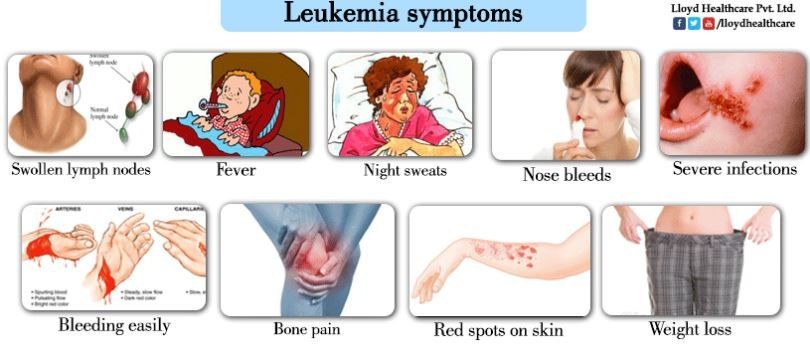
Contents
Life Expectancy for Patients with CLL
Patients with chronic lymphocytic leukemia (CLL) can have highly variable life expectancies. Some may live 2-3 years after diagnosis, while others may live 5-10 years.
CLL is a blood and bone marrow disorder where there is an abnormal production of lymphocytes, which are a type of white blood cell. The survival rate for CLL depends on factors such as the stage at diagnosis, existing comorbidities, age, and tolerance to treatment.
With advancements in oncology research, the survival rate for CLL has shown improvement. Recent statistics indicate that the five-year survival rate for individuals 20 years and older with CLL is 86%. Furthermore, mortality from CLL has decreased to about 3% annually between 2008 and 2017.
- The primary goal of treatment for most patients is to effectively manage CLL for as long as possible.
- Approximately 10% of patients may not require treatment at all, while others may undergo periods of treatment and remission.
- Due to the availability of multiple treatment options, CLL can be effectively managed for many years.
- CLL typically progresses slowly, with longer intervals between treatments. However, some individuals may have a more aggressive form of CLL, necessitating frequent treatment.
- Specific cell mutations can make CLL more challenging to treat and increase the risk of death.
- Patients with lower-stage CLL generally have a better prognosis than those with advanced stages of the disease.
- The average life expectancy for most individuals with CLL is around 10 years, although this varies based on the disease’s behavior.
- Patients in stages 0 to II can live 5-20 years without requiring treatment.
- CLL has a higher incidence rate in individuals over 60 years old.
- CLL is more common in men than women. The life expectancy of individuals with B cell CLL is generally 10-20 years, while T cell CLL has a shorter life expectancy.
It is crucial to consult with a doctor regarding an individual’s specific situation since each CLL diagnosis is unique. Interpretation of survival statistics can be challenging due to individual variations.
Understanding CLL
Chronic lymphocytic leukemia (CLL) is a blood and bone marrow cancer characterized by the overproduction of abnormal lymphocytes.
Lymphocytes are categorized into two types:
- B lymphocytes
- T lymphocytes
Lymphocytes are vital components of the immune system and play a role in fighting infections.
B cells are affected in more than 90% of CLL cases. These abnormal B cells are non-functional and compete with normal blood cells for resources, leading to the death of healthy red blood cells, white blood cells, and platelets.
CLL often develops slowly, and many people may not exhibit initial symptoms.
Common Symptoms of CLL
Possible symptoms of CLL include:
- Pain or discomfort from an enlarged spleen on the left side of the ribs
- Fever of unknown origin
- Anemia causing fatigue, dizziness, pallor, and shortness of breath during physical activity
- Increase in bleeding or bruising, appearance of pinhead-sized purple spots on the skin (caused by a low platelet count)
- Frequent infections, slow healing (caused by a low white blood cell count)
- Painless swelling of lymph nodes in the neck, underarms, or groin
- Excessive night sweats
- Unintentional weight loss
QUESTION
Different Types of CLL
CLL can be either slow-growing (indolent) or fast-growing (aggressive).
- Indolent CLL:
- Slow-growing CLL can remain stable for years without treatment.
- If CLL is indolent, abnormal lymphocytes may be present in the blood, but other blood cell counts are normal or slightly low.
- Early-stage CLL may be detected incidentally during routine or diagnostic tests.
- However, individuals with slow-growing CLL may not experience symptoms.
- Aggressive CLL:
- Aggressive CLL grows quickly and requires immediate treatment.
- If CLL is aggressive, there is a high number of abnormal lymphocytes in the blood, crowding out healthy blood cells.
- Untreated aggressive CLL can lead to severe complications.
Staging Systems for CLL
Staging is crucial for determining the most appropriate treatment plan for individuals with chronic lymphocytic leukemia (CLL). Unlike other cancers, CLL’s staging is based on blood involvement rather than lymph node involvement.
There are two staging systems for CLL:
- Binet system:
- Stage A: Up to three areas of lymphoid swelling (liver, spleen, or lymph nodes in the neck, armpits, or groin).
- Stage B: Three or more areas of lymphoid swelling.
- Stage C: Thrombocytopenia (low platelet count) and/or anemia (low red blood cell count).
- Rai system:
- Stage 0: Extremely high lymphocyte count.
- Stage I: Elevated lymphocyte count and swollen lymph nodes.
- Stage II: High lymphocyte count, swollen liver or spleen, and swollen lymph nodes.
- Stage III: Elevated lymphocyte count, anemia (low red blood cell count), with or without swollen lymph nodes, liver, or spleen.
- Stage IV: Elevated lymphocyte count, thrombocytopenia (low platelet count), with or without swollen lymph nodes, liver, or spleen, or anemia.
Many individuals with CLL may not experience obvious symptoms. The disease may be detected during routine blood tests or physical examinations.
CLL can cause various symptoms depending on the tumor’s location in the body.
Treatment Options for CLL
Several treatment options are available for chronic lymphocytic leukemia (CLL) and have proven effective.
While most current treatments do not cure CLL, they help manage the disease. Some individuals with CLL may not require treatment for extended periods, while others may require treatment intermittently over the years.
The following treatment options are commonly used:
- Watchful Waiting/Vigilance: Doctors monitor the disease’s complications, such as infections, without immediate treatment.
- Radiation Therapy: High-energy X-rays or other radiation types are used to kill or inhibit the growth of cancer cells.
- Chemotherapy: Drugs are used to halt the growth of cancer cells, either by killing them or preventing division.
- Surgery: Splenectomy, the surgical removal of the spleen, is a common recommendation.
- Targeted Therapy: Drugs or substances are used to identify and attack specific cancer cells while minimizing harm to normal cells.
New treatments are also being tested in clinical trials, including:
- Chemotherapy with Stem Cell Transplantation:
- A method that combines chemotherapy with the replacement of destroyed blood-forming cells.
- Stem cells are collected from the patient or a donor’s blood or bone marrow and stored for later use.
- After chemotherapy, the stored stem cells are thawed and infused back into the patient, restoring blood cell production.


